SsangYong Tivoli vs Suzuki Vitara - pictures

SsangYong has turned its back on its budget roots and wants a piece of the action in the booming crossover market. Can its new Tivoli make a splash and take down the new Suzuki Vitara? We find out in this test.

The Tivoli tested here is the 1.6-litre petrol EX model. It comes in at a reasonable £14,600 and produces 126bhp.
- Skip advertAdvertisement - Gallery continues below
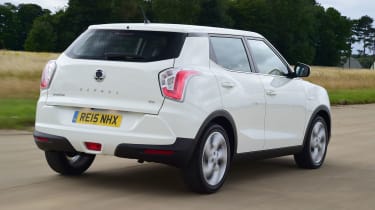
On the road, the car feels quite sluggish and the engine makes itself known to those inside. It isn't as comfortable, either, thanks to a firm suspension setup.
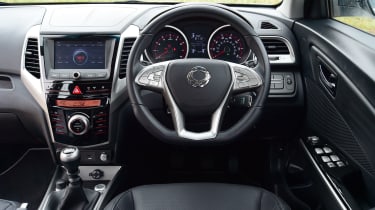
The Tivoli comes loaded with kit, including air-con, but the material quality could be better.
- Skip advertAdvertisement - Gallery continues below
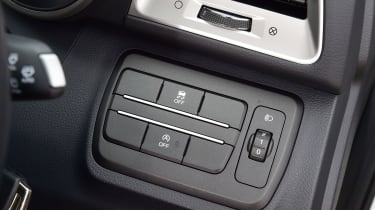
Electronic all-wheel drive is available on diesel Tivolis.
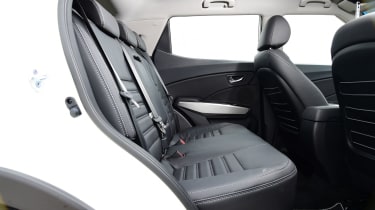
Rear seats are roomy, but they don't fold flat if you want to expand the boot capacity.
- Skip advertAdvertisement - Gallery continues below
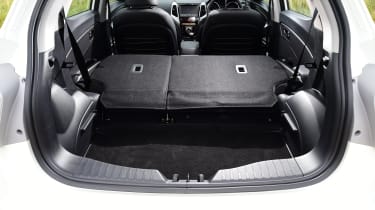
With the rear seats in place the Tivoli offers up 423 litres of boot space, but the load lip is awkwardly shaped.

The steering could be more responsive through the bends, but grip in dry conditions is reasonable.
- Skip advertAdvertisement - Gallery continues below
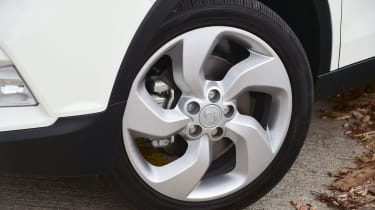
All Tivoli models get alloy wheels as standard, and they sit well within the car's aggressive arches.
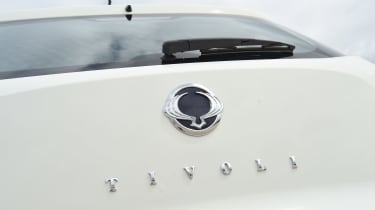
There's no denying the Tivoli's showroom appeal when prices start at just £12,950 - with this including plenty of kit, the option of four-wheel drive and a 5-yer warranty.
- Skip advertAdvertisement - Gallery continues below
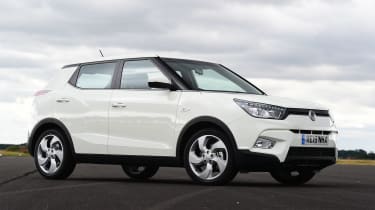
Top-spec ELX models can be specified with the £400 Styling Pack, which includes 18-inch alloys and a contrasting roof; or the £350 Red Pack, adding red finishes for the leather seat trim and dash, plus ambient cabin lighting.
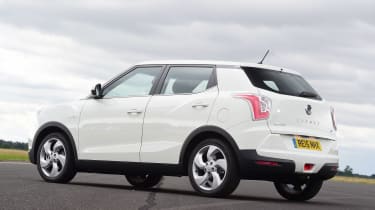
It's clear that SsangYong has noticed the trend for fashionable crossovers, but there are so many different design touches on the Tivoli that it can look a little incoherent to some.
- Skip advertAdvertisement - Gallery continues below
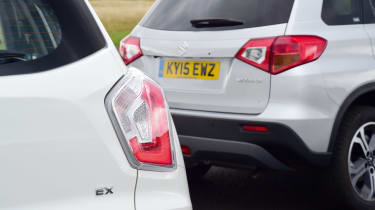
The Tivoli's design is certainly bold but hardly attractive, whereas Suzuki offers buyers the chance to specify contrasting roof colours and trim inserts.

The Suzuki Vitara has abandoned its rugged off-road roots and been transformed into a fun-to-drive and great value compact crossover. Here we test it in SZ4 trim, powered by a 1.7-litre petrol engine producing 118bhp.
- Skip advertAdvertisement - Gallery continues below
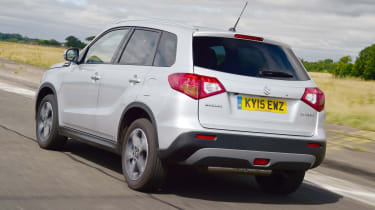
In terms of driving dynamics, the Vitara has the Tivoli easily beaten. The engine's crisp throttle response and eager nature makes it feel more lively than the SsangYong, plus it emits a sporty growl when you put your foot down.
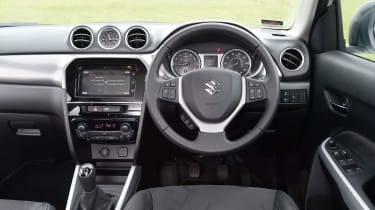
The simple interior looks appealing with gloss black trim and a soft leather steering wheel, but quality can't match that of some of its more expensive rivals. The retro analogue clock on the top of the dash looks the part.
- Skip advertAdvertisement - Gallery continues below
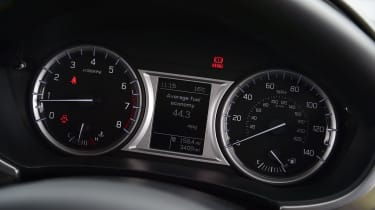
The dials are easy to read in the Vitara.
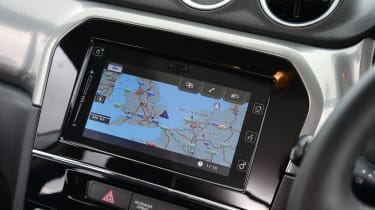
The interior is robustly built, but it looks quite cheap in places. You can specify contrasting trim inserts for the dash and air vent surrounds if you want to personalise it more.
- Skip advertAdvertisement - Gallery continues below
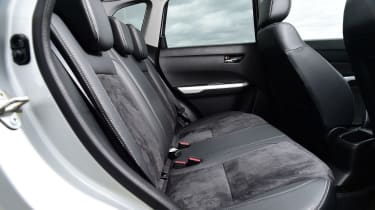
Rear seats offer plenty of head and legroom for passengers and access is easy thanks to doors that open nice and wide.
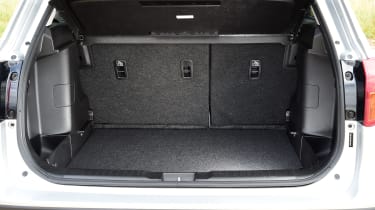
The 375-litre boot trails the Tivoli's, but it's better shaped and features a neat false floor that creates a flat load lip.
- Skip advertAdvertisement - Gallery continues below
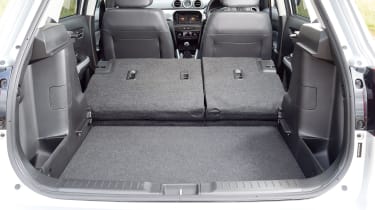
With the rear seats folded, there's 710 litres of space on offer and there are handy storage bins set into the sides of the load area.
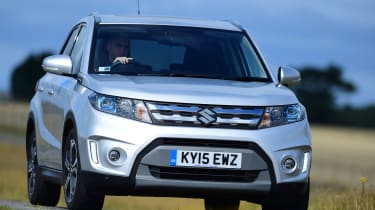
The Vitara delivers agile handling, despite its tall body. Head down a twisty back road and you'll feel the spirit of the agile Swift supermini in the handling. It makes the Suzuki a surprisingly entertaining companion.
- Skip advertAdvertisement - Gallery continues below
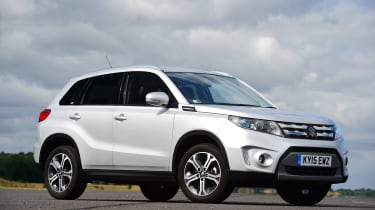
It's not the most exciting car to look at, but the Vitara has some neat design touches like LED running lights eye-catching character lines running down the flanks.
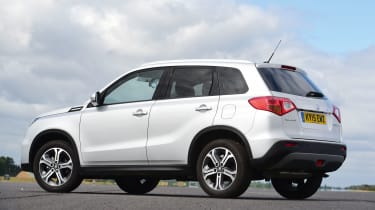
If you want the car to stand out further, you can add Urban or Rugged styling packs and contrasting roof colours.
- Skip advertAdvertisement - Gallery continues below
Recommended
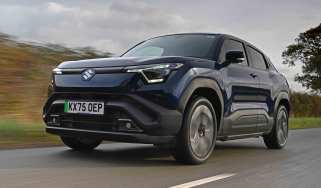
Suzuki e Vitara review
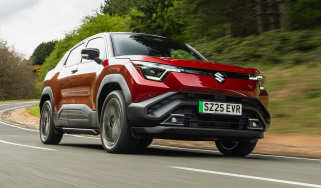
Suzuki e-Vitara price plummets by almost £4k
New Suzuki e Vitara smashes the Skoda Elroq and Kia EV3 on price

Suzuki Vitara review
Most Popular
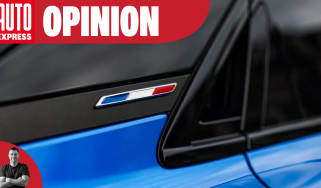
Alpine might have finally delivered a premium French car that Brits will take seriously

Tesla-style door handles banned in China over safety fears

Best new cars coming soon: all the big new car launches due in 2026, 2027 and beyond